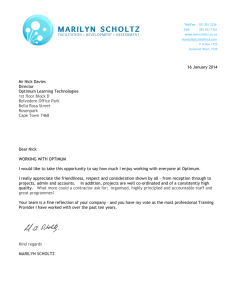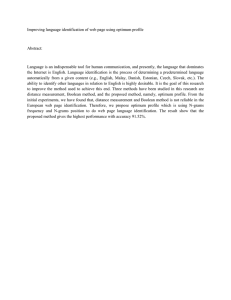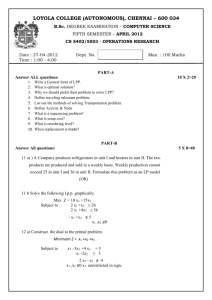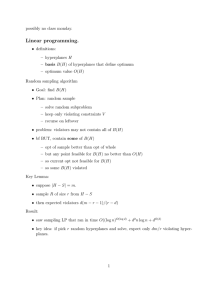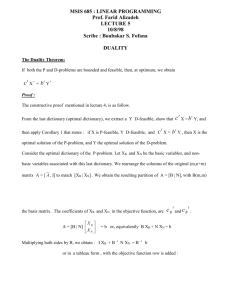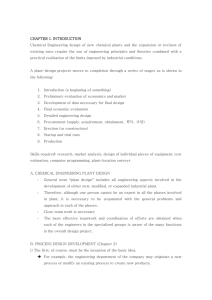Optimization Practice Problems: Linear Programming
advertisement
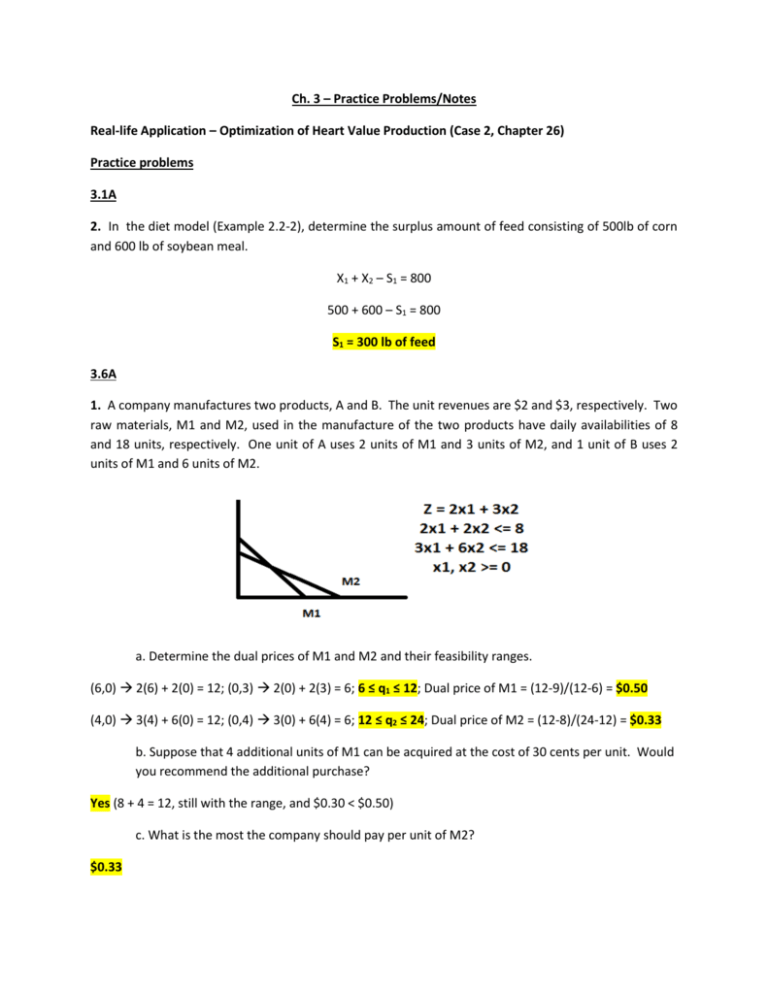
Ch. 3 – Practice Problems/Notes Real-life Application – Optimization of Heart Value Production (Case 2, Chapter 26) Practice problems 3.1A 2. In the diet model (Example 2.2-2), determine the surplus amount of feed consisting of 500lb of corn and 600 lb of soybean meal. X1 + X2 – S1 = 800 500 + 600 – S1 = 800 S1 = 300 lb of feed 3.6A 1. A company manufactures two products, A and B. The unit revenues are $2 and $3, respectively. Two raw materials, M1 and M2, used in the manufacture of the two products have daily availabilities of 8 and 18 units, respectively. One unit of A uses 2 units of M1 and 3 units of M2, and 1 unit of B uses 2 units of M1 and 6 units of M2. a. Determine the dual prices of M1 and M2 and their feasibility ranges. (6,0) 2(6) + 2(0) = 12; (0,3) 2(0) + 2(3) = 6; 6 ≤ q1 ≤ 12; Dual price of M1 = (12-9)/(12-6) = $0.50 (4,0) 3(4) + 6(0) = 12; (0,4) 3(0) + 6(4) = 6; 12 ≤ q2 ≤ 24; Dual price of M2 = (12-8)/(24-12) = $0.33 b. Suppose that 4 additional units of M1 can be acquired at the cost of 30 cents per unit. Would you recommend the additional purchase? Yes (8 + 4 = 12, still with the range, and $0.30 < $0.50) c. What is the most the company should pay per unit of M2? $0.33 d. If M2 availability is increased by 5 units, determine the associated optimum revenue. Opt. Revenue = $10, 10 + 5(0.33) = $11.65 3.6B 1. Consider Problem 1, Set 3.6a. a. Determine the optimality condition for cA/cB that will keep the optimum unchanged. ½ ≤ c1/c2 ≤ 1 b. Determine the optimality ranges for cA and cB, assuming that the other coefficient is kept constant at its present value. 1 = c1/3, ½ = c1/3; 1.5 ≤ c1 ≤3 1 = 2/c2, ½ = 2/c2; 2 ≤ c2 ≤ 4 c. If the unit revenues cA and cB are changed simultaneously to $5 and $4, respectively, determine the new optimum solution. c1/c2 ≤ 1 ≤ 5/4, outside of range; x1 = 4, x2 = 0; Z = $20 d. If the changes in (c) are made one at a time, what can be said about the optimum solution? C1 = 5; outside of range, changes opt.; x1 = 4, x2 = 0; Z = $20 C2 = 4; inside of range, does not change opt.; x1 = 2, x2 = 2; Z = $12

